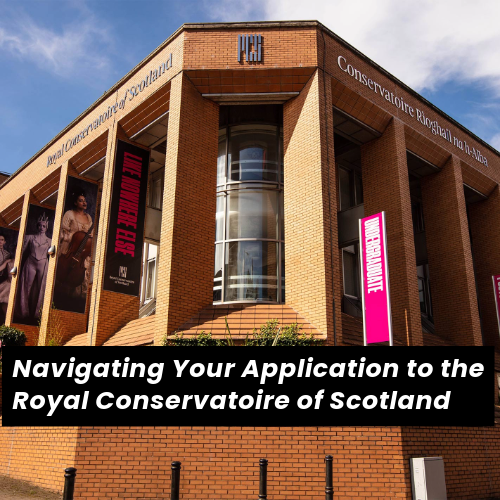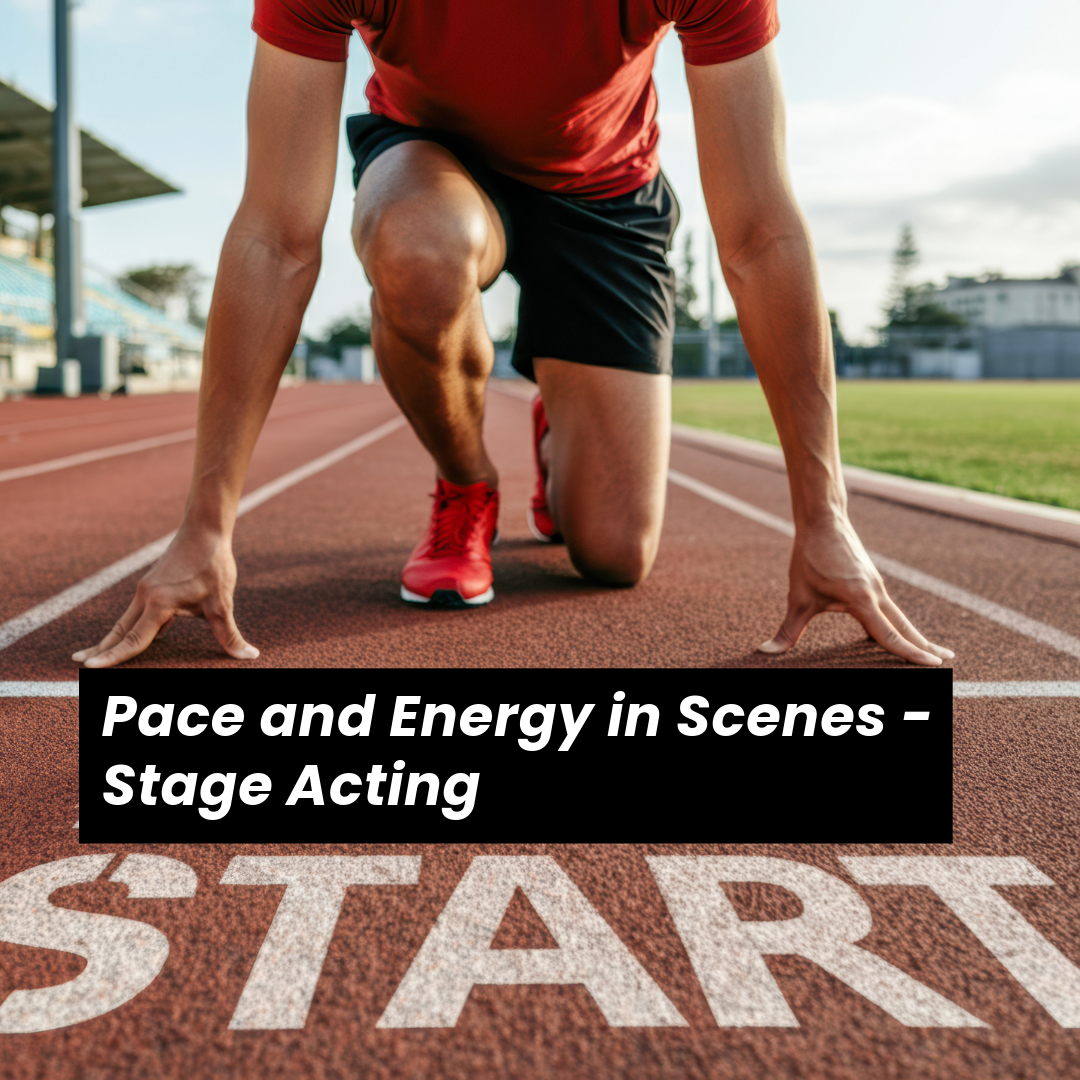Navigating Your Application to the Royal Conservatoire of Scotland: A Quick Guide
Applying to the Royal Conservatoire of Scotland can be a transformative step in your performing arts journey. From researching programs to preparing for auditions, every stage of the process requires dedication and planning. In this blog, we break down the application process, share practical tips, and highlight how to make your submission stand out. Whether you're pursuing acting, music, or dance, this guide will help you approach your RCS application with confidence and clarity.
James McAvoy's Directorial Debut and Glasgow Filming
James McAvoy is bringing Hollywood back to his hometown with his directorial debut, California Schemin’, filming in iconic Glasgow locations. The movie tells the wild true story of Scottish rappers Silibil N’ Brains, who duped the music industry with their fake American personas. As a proud alumnus of the Royal Conservatoire of Scotland, McAvoy also continues to support aspiring talent through the James McAvoy Drama Scholarship.
University vs. Conservatoire: Which Path Suits Your Acting Ambitions?
Deciding between university drama courses and conservatoire training is a big step for any aspiring actor. While conservatoires offer immersive, hands-on training tailored for the industry, universities provide a mix of practical and academic study, offering broader career possibilities. In this blog, we break down the key differences to help you decide which path aligns best with your acting ambitions and learning style.
Top 10 Drama Schools in the UK: A Short Guide for Aspiring Actors
Choosing the right drama school is a big decision for any aspiring actor. The UK is home to some of the world’s most prestigious schools, offering exceptional training and career opportunities. In this blog, we dive into ten top drama schools, exploring their unique offerings, notable alumni, and financial support options. Whether you’re dreaming of the West End or Hollywood, this guide will help you find the perfect fit for your acting journey.
The Evolution of Shakespeare’s Female Characters Through Their Monologues
Shakespeare’s female characters have evolved from romantic ingénues to commanding, multifaceted figures, offering a fascinating journey through his works. Their monologues reveal emotional depth, wit, and power, reflecting the complexities of womanhood across time. In this blog, we explore how Shakespeare’s women—through speeches like Juliet’s heartfelt soliloquies and Cleopatra’s regal commands—trace the playwright’s growth and continue to inspire modern actors and audiences alike.
Shakespeare’s Female Monologues: A Platform for Women’s Voices
Shakespeare’s female monologues are more than just powerful speeches—they’re platforms for women’s voices, transcending their historical context to challenge norms, assert agency, and inspire modern audiences. From Beatrice’s wit to Paulina’s righteous fury, these monologues showcase the strength, complexity, and resilience of women. In this blog, we explore how Shakespeare’s women continue to empower actors and audiences alike, proving that their voices are as vital today as they were centuries ago.
Best Shakespeare Sonnets
Shakespeare’s sonnets have captivated readers for centuries, offering timeless insights into love, beauty, time, and mortality. From the iconic “Shall I compare thee to a summer’s day?” to the introspective “When, in disgrace with fortune and men’s eyes,” these sonnets continue to resonate with modern audiences. In this blog, we explore the most celebrated sonnets, their enduring themes, and why they remain essential reading for lovers of poetry and performance alike.
Relevance of Female Shakespeare Monologues Today
Shakespeare’s female monologues are as timeless as they are powerful, offering actors and audiences a glimpse into the complexities of love, identity, and human resilience. From Juliet’s heartfelt musings to Paulina’s fierce demand for justice, these speeches transcend their Elizabethan origins to speak to modern audiences. Discover why these monologues remain essential for actors today and how they continue to amplify women’s voices, challenge societal norms, and reflect our shared humanity. Dive into the enduring legacy of Shakespeare’s women and the lessons they offer for performers and storytellers alike.
Articulation Exercises for Actors
Master the art of clear and precise speech with our top articulation and diction exercises for actors. From tongue twisters to breathing drills, these techniques will enhance your vocal clarity and performance impact. Perfect for professionals and aspiring actors alike!
Mastering the Wit of Tom Stoppard: Tips for Actors
Master the art of Tom Stoppard’s witty and layered characters with our essential guide. From unpacking complex language to balancing intellect and emotion, learn how to bring his unforgettable dialogue to life and deliver a performance that truly shines.
Pace and Energy in Scenes - Stage Acting
In stage acting, the dynamics of pace and energy are pivotal in bringing scenes to life. Our blog post, "Pace and Energy in Scenes - Stage Acting," delves into common pitfalls such as the "polite tennis" exchange, where actors deliver lines in a measured, turn-taking manner, leading to a monotonous performance. We explore how authentic dialogue often involves rapid, overlapping exchanges, reflecting real-life conversations where responses are formulated even before the other person finishes speaking. By embracing this natural rhythm, actors can infuse their performances with vitality and authenticity, moving beyond self-indulgent pauses to create engaging and dynamic scenes.
Five More Acting Tips for Great Audition Self Tapes
Enhancing your self-taped auditions is crucial in today's acting landscape. Our blog post, "Five More Acting Tips for Great Audition Self Tapes," offers advanced strategies to elevate your performances. We delve into comprehensive scene analysis, effective portrayal of character objectives, and crafting a compelling emotional journey. By implementing these techniques, you can create self-tapes that captivate casting directors and set you apart in the audition process.
Why your Audition Self Tape Went Wrong
In the evolving landscape of auditions, self-taping has become a prevalent method for actors to showcase their talents. However, many actors find their self-taped auditions falling short. Our blog post, "Why Your Audition Self Tape Went Wrong," delves into common pitfalls such as insufficient preparation, lack of objective feedback, and the tendency to make overly safe choices. By understanding these issues, actors can refine their self-taping techniques to deliver more compelling and successful auditions.
How to Perform Alan Bennett’s Monologues with Subtlety and Humour
Master the art of Alan Bennett’s monologues with our guide to balancing wit and vulnerability. Discover how to connect with audiences through Bennett’s deeply human characters and bring their humour and emotional depth to life.
Elaine C Smith Prize
The Royal Conservatoire of Scotland has introduced the Elaine C. Smith Prize, celebrating one of Scotland’s most beloved performers. Named after the iconic actress and comedian, known for her roles in Rab C. Nesbitt and Two Doors Down, this annual award supports emerging talent in the performing arts. With deep roots in Glasgow and a legacy of championing the arts, Elaine C. Smith’s impact continues to inspire the next generation of Scottish performers.
Exploring Feminism in Caryl Churchill’s Plays
Discover the fearless feminism of Caryl Churchill’s plays in our latest blog. From redefining gender roles in Top Girls to exposing power dynamics in Cloud Nine, explore how her groundbreaking works challenge societal norms and inspire bold performances.
Blending Humour and Heart: Lessons from Fleabag
Phoebe Waller-Bridge’s Fleabag masterfully blends razor-sharp humour with raw emotional depth. Learn the storytelling secrets behind its flawed, relatable characters and its fearless exploration of vulnerability and connection.
The Relationship Between Subtext and Actions
Understanding the interplay between subtext and actions is crucial for delivering authentic performances. Our blog post, "The Relationship Between Subtext and Actions," delves into how subtext—the underlying meaning beneath spoken words—aligns with a character's objectives and influences their actions. By effectively interpreting and conveying subtext, actors can add depth to their portrayals, ensuring that both dialogue and physical actions resonate with the character's true intentions.
The Art of Balancing Satire and Emotion in Lucy Prebble’s Plays
Discover how Lucy Prebble masterfully blends biting satire with raw emotional depth in her plays. From the dark humour of Enron to the heartfelt exploration of love in The Effect, explore why her storytelling captivates and challenges audiences worldwide



















